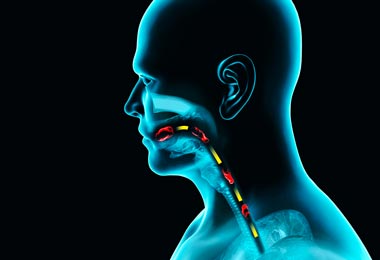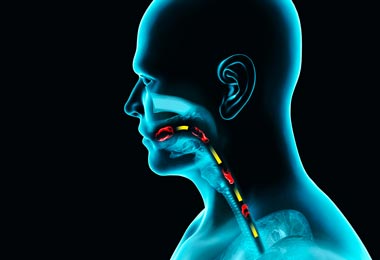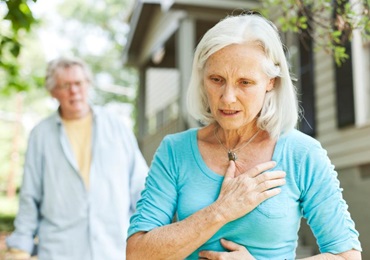Diverticular Disease
What is diverticular disease?
Diverticular disease is a group of conditions in which tiny pouches form in the colon. The pouches are called diverticula.
These pouches bulge out through weak spots in your colon. The pouches can become inflamed (red, swollen) or infected. When the pouches are infected, the condition is called diverticulitis.
Diverticular disease includes:
-
Diverticulosis. This is when you have one or more tiny pouches called diverticula in your colon.
-
Diverticulitis. This is when the pouches in your colon get inflamed with or without infection.
-
Diverticular bleeding. This happens when a small blood vessel in a pouch breaks open and bleeds.
Over half of people in the United States over age 60 will have diverticulosis. Some people with diverticulosis also get diverticulitis.
Diverticular disease is often seen in developed countries. It is very common in the U.S., England, and Australia. People in these countries eat less fiber.
Diverticular disease is rare in countries such as Asia and Africa. People in these countries eat more fiber and more vegetables.
What causes diverticular disease?
Experts are not sure what causes diverticular disease. Research suggests that some possible causes may be related to genetic factors, a low-fiber diet, a diet high in red meat, lack of physical activity, obesity, some medicines, immune problems, or connective tissue problems in the colon.
Fiber helps make your stools soft and easy to pass. Eating more fiber helps stop constipation.
Constipation is the main cause of greater pressure in your colon. When you are constipated, your muscles strain to move stool that is too hard. The extra pressure from this straining makes the weak spots in your colon bulge out. These pouches that bulge out are the diverticula.
Experts do not know what causes the infection that leads to diverticulitis. They think the infection may start when stool or bacteria are caught in the diverticula.
Who is at risk for diverticular disease?
Experts don’t know for sure if your diet affects your risk of getting diverticular disease. But you are more at risk for the disease if you:
-
Are over 50 years old
-
Have diverticulosis
-
Are obese
-
Don’t get enough exercise
-
Use nonsteroidal anti-inflammatory drugs (NSAIDs)
-
Smoke
What are the symptoms of diverticular disease?
Each person’s symptoms may vary. Symptoms may include:
-
Diverticulosis. Most people with diverticulosis don't have any pain or symptoms. If symptoms are present, they may include mild cramps, bloating, or constipation. These symptoms are common and don’t always mean that you have diverticulosis.
-
Diverticulitis. The most common symptom of diverticulitis is belly or abdominal pain. The most common sign that you have it is feeling sore or sensitive on the left side of your lower belly. If infection is the cause, you may have fever, nausea, vomiting, chills, cramping, and constipation.
-
Diverticular colitis. This is when the colon gets inflamed (colitis) as a result of the diverticular disease. This is less common than diverticulitis.
-
Diverticular bleeding. The most common symptom of diverticular bleeding is painless bleeding from the rectum. You likely will see bright red or maroon-colored blood in your stool.
The symptoms of diverticular disease may look like other health problems. Always see your healthcare provider to be sure.
How is diverticular disease diagnosed?
Your healthcare provider will look at your past health and do a physical exam. They may also use some of the following tests:
-
CT scan. This test shows detailed images of any part of the body, such as the bones, muscles, fat, and organs. This is used to check for complications of diverticular disease like diverticulitis.
-
Barium enema. This is also called a lower GI (gastrointestinal) series. This is an X-ray exam of your rectum, the large intestine, and the lower part of your small intestine. You will be given a metallic fluid called barium. Barium coats the organs so that they can be seen on an X-ray. The barium is put into a tube and inserted into your rectum as an enema. An X-ray of your belly will show if you have any narrowed areas (strictures), blockages, or other problems.
-
Virtual colonoscopy. This is a CT scan that checks your colon using air and contrast.
-
Flexible sigmoidoscopy. This test checks the inside of part of your large intestine. It helps to tell what is causing constipation. A short, flexible, lighted tube with a tiny camera on the end (sigmoidoscope) is put into your intestine through the rectum. This tube blows air into your intestine to make it swell. This makes it easier to see inside. A tissue sample (biopsy) can be taken if needed.
-
Colonoscopy. This test looks at the full length of your large intestine. It can help check for any abnormal growths, tissue that is red or swollen, sores (ulcers), or bleeding. A long, flexible, lighted tube with a camera on the end (colonoscope) is put into your rectum up into the colon. This tube lets your healthcare provider see the lining of your colon and take out a tissue sample (biopsy) to test it. They can also treat some problems that may be found.
How is diverticular disease treated?
Treatment will depend on your symptoms, age, and general health. It will also depend on how severe the condition is.
Experts suggest eating 20 to 35 grams of fiber each day. Your healthcare provider may tell you to eat more foods that have fiber, such as:
-
Whole-grain breads, cereals, and other items
-
Fruit, such as berries, apples, and peaches
-
Vegetables, such as broccoli, cabbage, spinach, carrots, asparagus, and squash
-
Beans
Treatment for diverticulitis may also include:
-
Pain medicines
-
Medicines to fight infection (antibiotics)
-
Medicines to control muscle spasms
-
A clear liquid diet for a short time to rest the colon, then slowly adding solid foods as your symptoms improve
You may need to stay in the hospital if you develop severe pain or infection. In some cases, surgery may be needed to remove part of the colon. If you have an infection in your abdomen, sometimes a tube is placed to drain the pus.
Once diverticulitis heals, a colonoscopy is usually recommended to check the colon.
What are possible complications of diverticular disease?
Possible complications include:
-
Infection (diverticulitis)
-
Holes, rupture, or tears in the intestines. These can cause sores (abscesses) or infection throughout the abdomen (peritonitis). Peritonitis can be fatal.
-
Blockages of the intestines
-
Bleeding (diverticular bleeding)
-
Colitis (inflammation of the colon)
What can I do to prevent diverticular disease?
Experts don’t know how to keep diverticular disease from happening. But once you have diverticulosis, it may be possible to decrease your risk of diverticulitis by eating a high-fiber diet and eating less red meat. You do not need to avoid corn, nuts, or seeds.
Living with diverticular disease
If you have diverticulosis, follow your healthcare provider’s advice. Some people with diverticulosis will get diverticulitis. A few will have diverticular bleeding.
When should I call my healthcare provider?
If your symptoms get worse or come back after treatment, call your healthcare provider or seek medical care right away. You should also call if you notice any bleeding.
Key points about diverticular disease
-
Diverticular disease is a group of conditions that result from small pouches in the colon. It includes diverticulosis (the pouches), diverticulitis (inflammation with or without infection of the pouches), and diverticular bleeding.
-
The most common symptom is belly or abdominal pain.
-
The most common sign that you have it is feeling tender around the left side of the lower abdomen.
-
To see if you have diverticular disease, your healthcare provider may order tests that look at your intestine from the outside (such as CT scan or virtual colonoscopy) or inside (such as colonoscopy).
-
Treatment may include eating more fiber. However, during attacks of diverticulitis, you may be told to remain on clear liquids or low-fiber foods for some time. Treatments may also include medicines or possible surgery.
-
You may need to stay in the hospital for treatment if you develop severe pain or infection.
-
Possible complications of diverticular disease may include infection (diverticulitis), rupture, colon blockages, and diverticular bleeding.
Next steps
Tips to help you get the most from a visit to your healthcare provider:
-
Know the reason for your visit and what you want to happen.
-
Before your visit, write down questions you want answered.
-
Bring someone with you to help you ask questions and remember what your healthcare provider tells you.
-
At the visit, write down the name of a new diagnosis and any new medicines, treatments, or tests. Also write down any new instructions your healthcare provider gives you.
-
Know why a new medicine or treatment is prescribed and how it will help you. Also know what the side effects are and when they should be reported.
-
Ask if your condition can be treated in other ways.
-
Know why a test or procedure is recommended and what the results could mean.
-
Know what to expect if you do not take the medicine or have the test or procedure.
-
If you have a follow-up appointment, write down the date, time, and purpose for that visit.
-
Know how you can contact your healthcare provider if you have questions, especially after office hours and on weekends and holidays.





